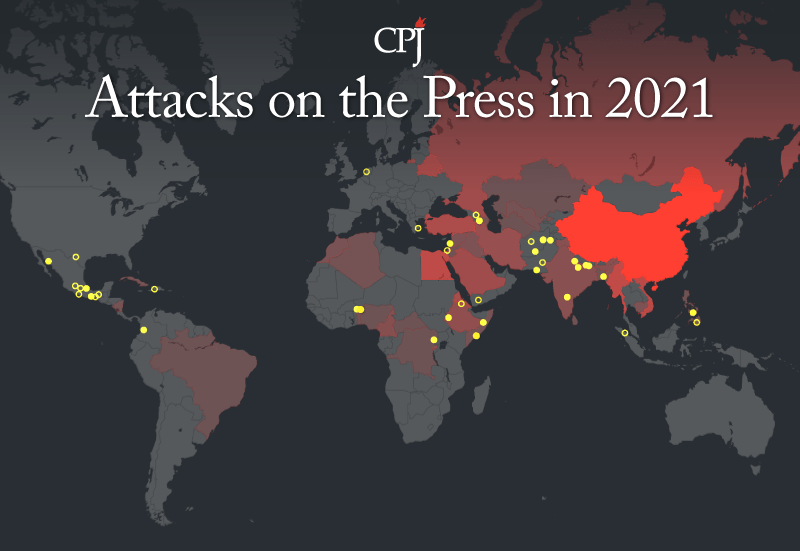The Middle East and North Africa region has long been especially dangerous for journalists. The Committee to Protect Journalists’ research has found that one out of every three reporters killed worldwide in retaliation for their work since 1992 — 477 out of 1,422, or 33.5% – were located in the region. That proportion rose to 43% in the last decade, with 245 of 568 killed there since 2011.
This year, however, reflected a different trend. While CPJ’s annual prison census documented a record 293 journalists jailed around the world because of their work, the Middle East and North Africa saw its regional number drop from 89 in 2020 to 72 as of December 1, 2021 – mainly as a result of releases in Egypt and Saudi Arabia. And for the first time in more than 20 years, CPJ confirmed just one case – Lebanese journalist Lokman Slim – of a journalist being murdered in relation to their work.
One murdered journalist, of course, is one too many. Plus, CPJ is also still investigating the killings of two other reporters to determine whether they too were targeted for their journalism. Yemeni journalist Rasha Abdullah al-Harazi was killed in a car bomb attack on November 9, 2021, while she was driving to a medical appointment with her husband, also a journalist, in the southern port city of Aden. Yousef Abu-Hussein was killed on May 19, 2021, when an Israeli warplane bombed the Gaza City apartment building where he lived with his family.
The question now: why is the regional data moving in a different direction to years past? Unsurprisingly, there’s no single or simple answer.
RELATED COVERAGE
Interactive map and more regional analysis of CPJ’s 2021 data
The overall decline, particularly in the number of journalists killed, may partly be due to the subsiding of the military and political conflicts in the countries most roiled by the uprisings and protests of the Arab Spring as well as the forced exile of journalists from countries like Syria.
Perhaps a bigger factor: governments in the region are making increasing use of methods like censorship, surveillance, and the criminalization of journalism as well as fresh arrests to silence outspoken reporters.
Thus while Egypt might have seen a decline in its overall number of incarcerated reporters in the last 12 months, the 25 it still held on December 1 make it the world’s third-worst jailer of journalists. Saudi Arabia ties with Russia for eighth place.
Or take Syria, which became one of the world’s deadliest countries for journalists when protests against Bashar al-Assad expanded into civil war. The numbers of those targeted by the government declined as the country saw an exodus of journalists first to opposition areas, then outside the county. From 2011 to 2015 CPJ helped more than 100 Syrian journalists go into exile and more than 70 to relocate after the U.S. withdrew its forces from opposition areas in 2019.
More recently, countries including Saudi Arabia and the United Arab Emirates have been documented as purchasers of spyware like Pegasus, allegedly used to surveil scores of journalists around the world.
Against this backdrop, the seemingly encouraging drop in the number of attacks and jailings of journalists in the Middle East and North Africa is still not reason to celebrate. But the trajectory is worth watching.
